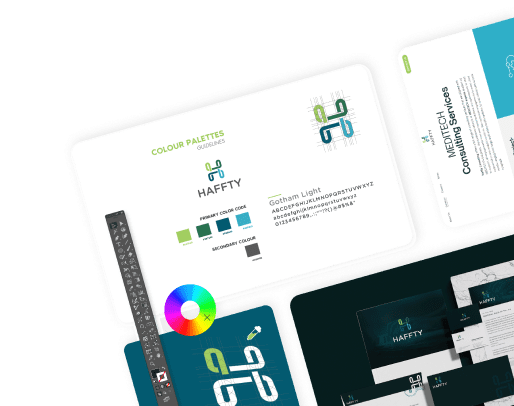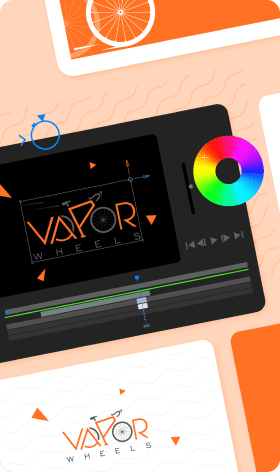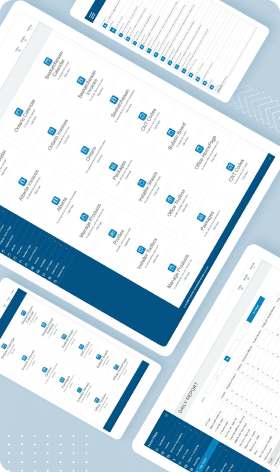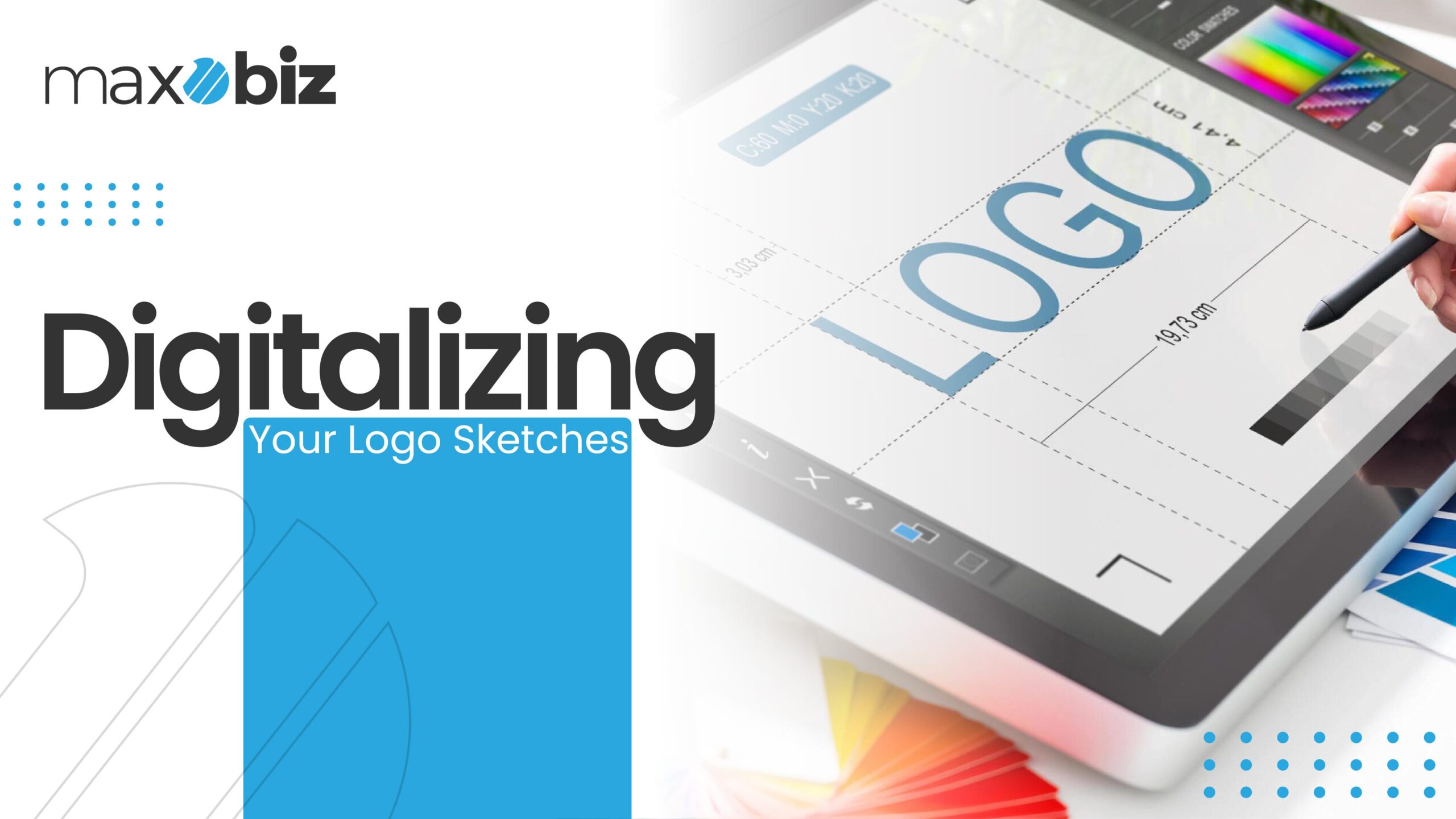Digitalizing logo sketches has become an important part of brand representation. This guide will explain the process in detail, highlighting its importance and the advantages of using embroidered logos instead of printed ones.
The Importance of Digitizing Logo Sketches:
Logo digitization goes beyond being a modern trend. It is a strategic step towards enhancing a brand’s identity. It involves converting hand-drawn logo sketches into a digital format that can be used with embroidery machines. This process is essential for various reasons. Firstly, digitizing logo sketches is the ability to achieve greater precision and accuracy when reproducing the logo on different surfaces. Whether it’s on clothing, accessories, or promotional items, digitization ensures that all the fine details of the logo are faithfully translated into the chosen medium.
Secondly, digitalization opens the door to versatility of logo. Once a logo is in a digital format, it becomes adaptable to different sizes without compromising quality. This scalability is particularly advantageous when considering the diverse range of merchandise that may bear the embroidered logo.Furthermore, digitized logos facilitate seamless integration with modern technology. They can be easily shared, modified, and archived, providing a level of flexibility that traditional sketches cannot match. This adaptability is crucial in a fast-paced, technology-driven business environment.
The Benefits of: Embroidery Logos over Printed Logos:
While both embroidery and printing are popular methods for incorporating logos onto various surfaces, embroidered logos offer distinct advantages that make them an appealing choice for many businesses.
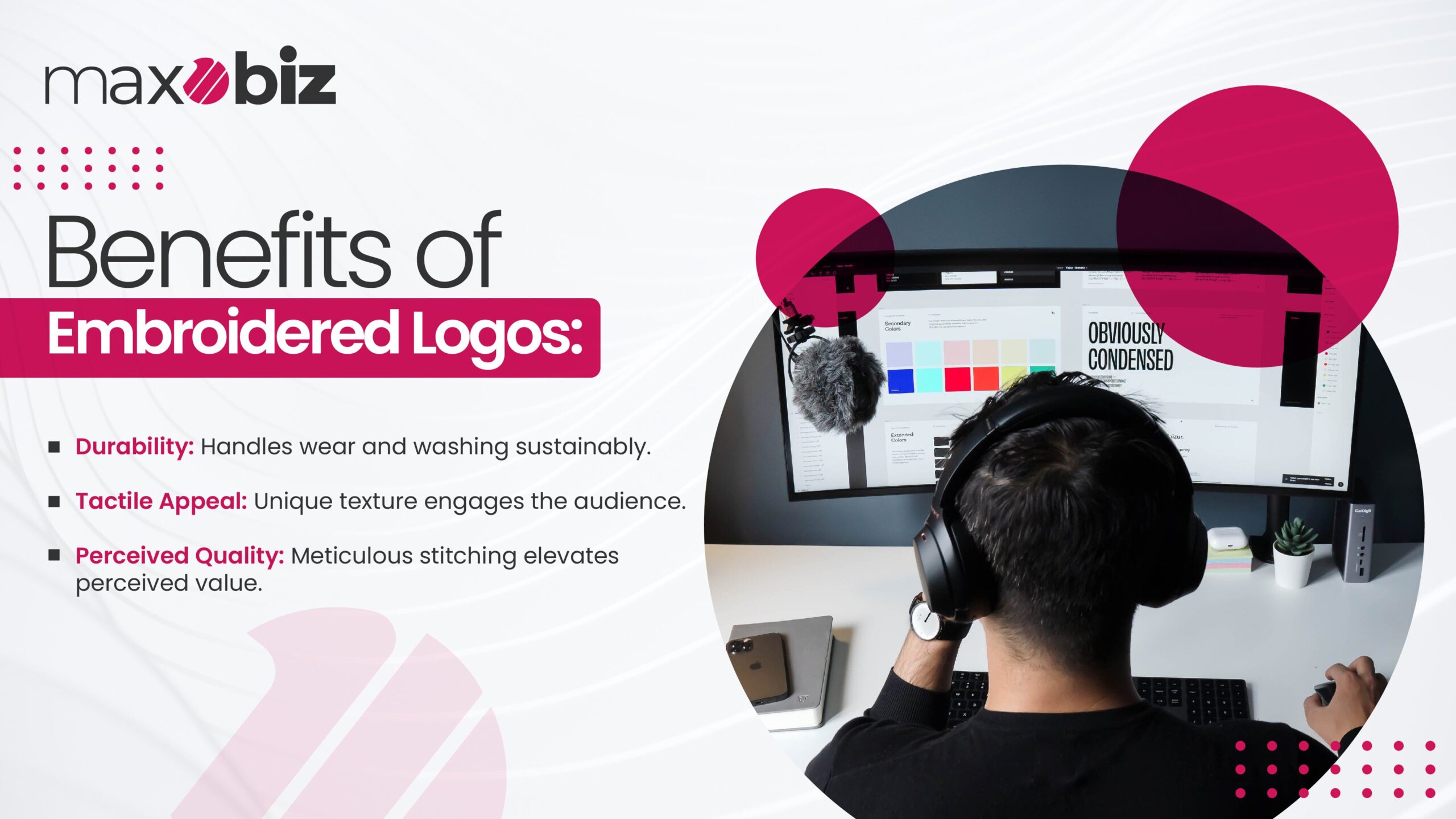
Durability:
Embroidered logos are known for being very durable. The stitching creates a strong and long-lasting design that can handle everyday wear and washing without losing its quality. This durability makes embroidered logos a sustainable and cost-effective branding option.
Tactile Appeal:
The texture of embroidered logos adds a unique and tactile element that printed logos don’t have. This texture not only makes the logos visually appealing but also creates a memorable and engaging experience for the audience.
Perceived Quality:
Embroidery is often associated with a higher perceived quality. The meticulous stitching conveys a sense of craftsmanship and attention to detail, elevating the perceived value of the branded merchandise.
Professional Aesthetic:
Embroidered logos have a professional and sophisticated look. Whether they are used on corporate apparel or promotional items, the raised and textured finish adds an elegant touch that enhances the brand’s overall image.
Versatility:
Embroidery is versatile and suitable for a wide range of fabrics and materials. This adaptability allows businesses to explore various branding opportunities across diverse products and industries.
Understanding: Logo Digitization
Defining Logo Digitization
Logo digitization is the process of converting a hand-drawn or digital logo into a format that can be understood and executed by an embroidery machine. This is important because embroidery machines require specific instructions in a digital file format to create the desired design. The initial logo, often in PNG or JPEG format, goes through a conversion process using specialized digitizing software.
This software interprets the design and translates it into a series of commands that the embroidery machine can follow. It’s not as simple as copying and pasting the logo; it involves intricate steps to ensure the design is accurately represented on the embroidered item.
Converting Logo Files into Embroidery Files
The conversion of logo files into embroidery-friendly formats is a diligent process that requires precision and expertise. Various file formats are used in embroidery, with common ones including DST, EXP, and PES. The choice of format depends on the type of embroidery machine being used.
The conversion process involves mapping out the stitches, specifying thread colors, and defining the sequence of stitches to recreate the original logo faithfully. This step is where the artistry of the digitizer comes into play, ensuring that the essence of the logo is preserved in the new format.
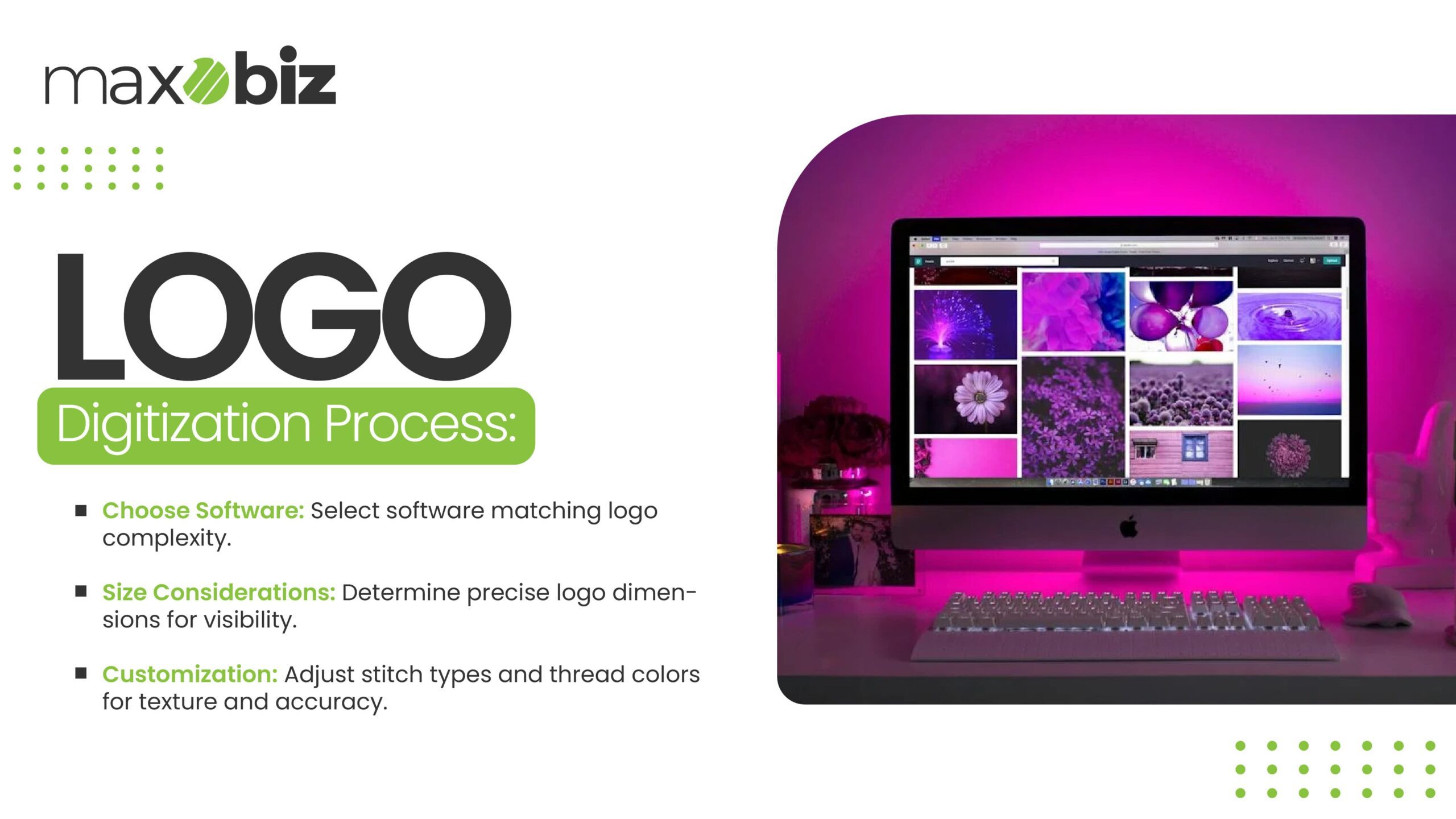
Steps to Digitize Embroidery Designs
1. Choosing the Right Digitizing Software
The journey of digitizing embroidery designs begins with selecting the right software. A lot of digitizing tools are available, each with its unique features and capabilities. Choosing software that aligns with the complexity of the logo and the desired level of customization is crucial. These tools provide a platform for importing, editing and converting logo files into embroidery-ready formats.
2. Setting the Appropriate Size for Your Logo
Size plays a pivotal role in the success of an embroidered logo. Before initiating the digitization process, it’s essential to determine the precise dimensions the logo should occupy on the intended merchandise.Considerations such as the type of product, placement of the product, and overall design aesthetics influence the sizing decision. The goal is to strike a balance between visibility and proportionality, ensuring the logo resonates effectively with the audience.
3. Selecting the Stitch Type for Unique Designs
Stitching is not just a functional aspect of embroidery; it contributes significantly to the visual appeal of the final design. Different stitch types create varied textures, styles, and looks, allowing for a customized approach based on the specific requirements of the logo.
Common stitch types in machine-based embroidery include:
Straight Stitch:
Basic and versatile, the straight stitch is commonly used for outlining and detailing.
Fill Stitch:
This stitch type fills a designated area with stitches, creating a solid and textured surface.
Satin Stitch:
Known for its smooth and shiny finish, the satin stitch is ideal for achieving a polished look. The choice of stitch type depends on factors such as fabric type, desired texture, and the overall aesthetic vision for the logo.
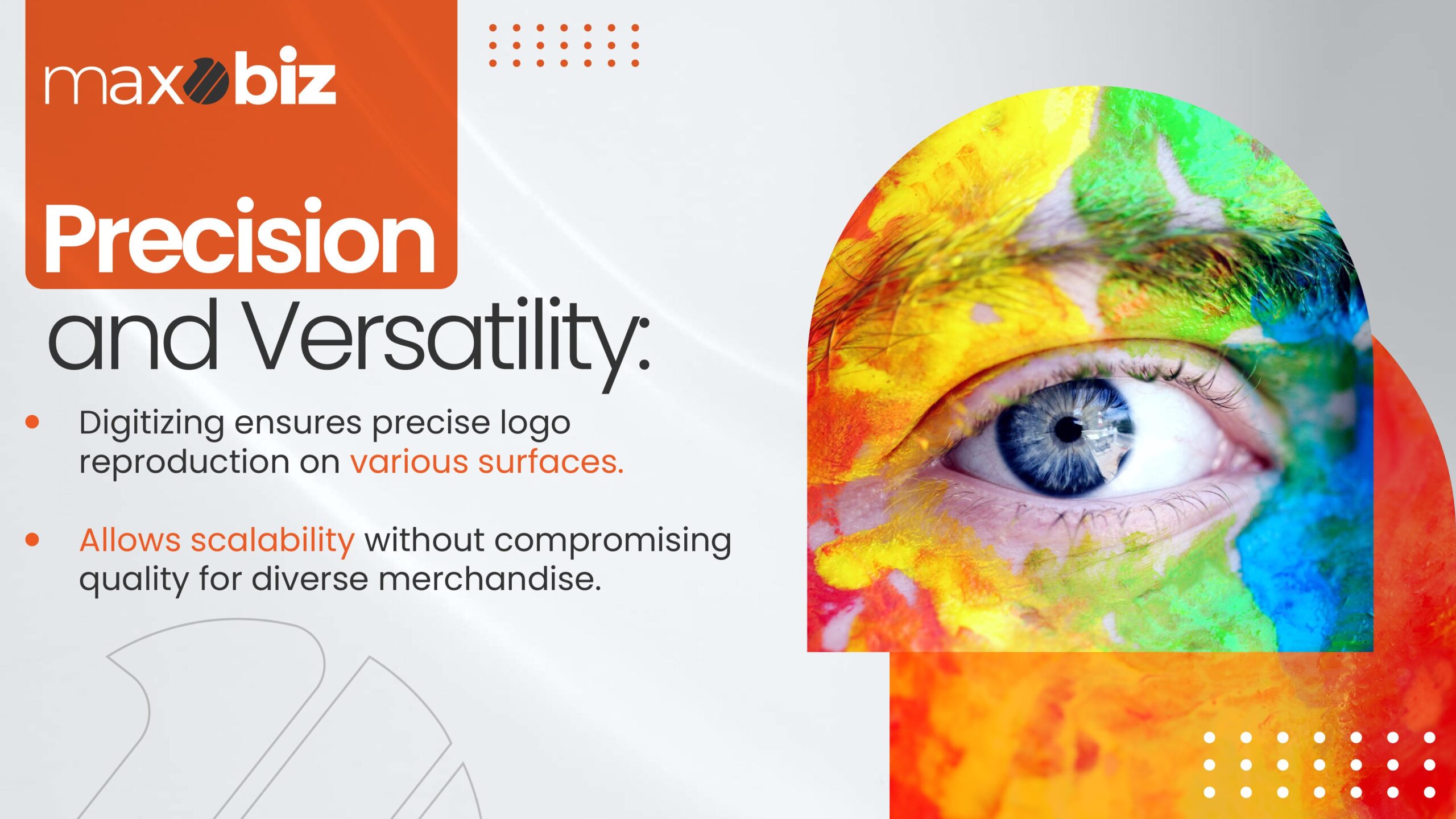
4. Establishing Stitch Direction for Precision
Stitch direction is a critical element in embroidery design. It involves determining the orientation of stitches to create a cohesive and visually appealing pattern. The correct stitch direction ensures that the embroidery machine follows a precise path, resulting in an accurate reproduction of the logo design. Factors influencing stitch direction include the design’s complexity, the type of fabric, and the desired visual effect. A well-established stitch direction not only enhances precision but also contributes to the longevity of the embroidered design.
5. Picking the Adequate Embroidery Thread Colors
The selection of thread colours is a creative and strategic decision in the digitization process. The goal is to replicate the logo’s original colours with precision, ensuring that the embroidered version aligns seamlessly with the brand’s visual identity. Embroidery thread is available in many colors, allowing for accurate colour matching. This step involves referencing the Pantone colours of the logo and selecting thread shades that closely mirror the original tone. Accurate colour reproduction is essential for brand consistency and recognition. The vibrancy and cohesion of the final embroidered logo depend on the thoughtful selection of thread colours.
6. Transferring and Digitizing the File for Embroidery
With the logo digitized and customized according to size, stitch type, stitch direction, and thread colours, the next step is to transfer the digitized file to the embroidery machine. This process is integral for the machine to recognize and execute the digitized design accurately.
Several methods can be employed for transferring the digitized file:Flashcard or USB Drive:
Save the digitized file onto a flashcard or USB drive, which can be inserted into the embroidery machine for direct access to the design.
Direct Computer Connection:
Connect the computer containing the digitized file directly to the embroidery machine using a USB cable. This method allows for seamless communication between the software and the machine.
Cloud-Based Transfer:
Some modern embroidery machines offer cloud connectivity, allowing users to transfer digitized files directly from cloud storage to the machine. The choice of transfer method depends on the specific capabilities of the embroidery machine and the convenience preferences of the user.
Preparing the Embroidery Machine
Notifying the Machine of Settings and Requirements. Before the embroidery machine sets the needle in motion, it needs clear instructions on various settings and requirements. This step involves specifying crucial parameters that dictate the machine’s behavior during the embroidery process.
Key settings to notify the machine include:
Thread Selection:
Specify the type and color of thread to be used for each segment of the design.
Stitch Sequence:
Define the order in which stitches should be executed to ensure a logical and coherent progression.
Needle Selection:
Depending on the complexity of the design and the fabric type, choose the appropriate needle for optimal results.
Orientation:
Communicate any specific orientation requirements for the logo, especially if it involves text or a directional design.
Tension Settings:
Adjust the tension settings to accommodate different thread types and prevent thread breakage or looping.
Backing or Stabilizer Placement:
Indicate the placement of backing or stabilizer material to provide support and maintain the integrity of the embroidered design.
Positioning the Fabric or Product in the Machine’s Arms
Once the machine is informed of its settings, the physical preparation begins. Positioning the fabric or product in the machine’s arms requires careful attention to detail to ensure the accurate execution of the digitized design.
Steps for positioning include:
Hoop Placement:
Secure the fabric or product within the embroidery hoop or frame. The hoop keeps the material taut and in position during the embroidery process.
Alignment Checks:
Confirm that the logo’s placement aligns with the intended position on the fabric. Make any necessary adjustments to achieve precise placement.
Securing the Material:
Ensure that the fabric or product is securely fastened within the hoop to prevent shifting during embroidery. This step is important for maintaining accuracy.
Threaded and Ready:
Thread the embroidery machine with the selected thread colors and ensure that all elements are in place for a seamless start.
Testing and Finalizing The Digitized Logo
Importance of Conducting Sample Tests
Before committing to the full embroidery process, conducting sample tests is a non-negotiable step. Sample tests serve multiple purposes, including:
Quality Assurance:
Assess the quality of the digitized design by closely examining the stitched sample. Check for any inconsistencies, thread tension issues, or unexpected outcomes.
Color Verification:
Confirm that the selected thread colors match the original logo’s colors accurately. Adjustments may be necessary based on how the colors appear on the embroidered material.
Stitch Precision:
Evaluate the precision of stitches, especially in intricate or detailed sections of the logo design. Ensure that the stitch direction contributes to a cohesive and well-defined design.
Machine Performance:
Gauge the overall performance of the embroidery machine during the sample test. Look for any signs of malfunction, unusual noises, or disruptions in the stitching process.
Making Necessary Adjustments for Perfect Results
During sample tests, it is common to discover small details that may need adjustments for the best results. Based on the findings from these tests, it is recommended to consider making the following adjustments:
Thread Tension Adjustments:
Fine-tune the tension settings if the sample test indicates issues such as loose threads, puckering, or thread breakage.
Stitch Density Alterations:
Adjust the density of stitches in specific areas to achieve the desired texture and visual effect. Dense stitching may be suitable for certain logo elements, while more open stitching may be preferred for others.
Color Corrections:
If the thread colors appear different on the embroidered material compared to the original logo, make necessary color corrections to achieve accurate replication.
Orientation Refinements:
Refine the orientation of stitches if the sample test reveals any misalignment or distortion in the logo’s appearance.
Speed and Machine Settings:
Consider adjusting the speed of the embroidery machine and fine-tuning other settings based on the observed performance during testing. Through the process of conducting sample tests and making necessary adjustments, the digitized logo gradually progresses toward its final form. This iterative approach allows any potential issues to be identified and resolved before the full-scale embroidery process begins.
Conclusion
In conclusion, the process of digitalizing logo sketches for embroidery involves a series of cautious steps, from choosing the right design to conducting sample tests. By following this comprehensive guide, you can navigate through each stage of logo digitization with precision.
Whether you are a business owner or an embroidery enthusiast, mastering the art of logo digitization ensures the creation of visually stunning and durable embroidered logos for your merchandise. Elevate your brand with the timeless and intricate art of digitalized logo embroidery.







